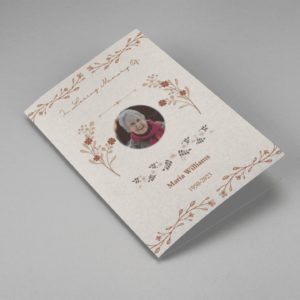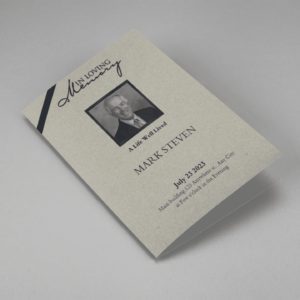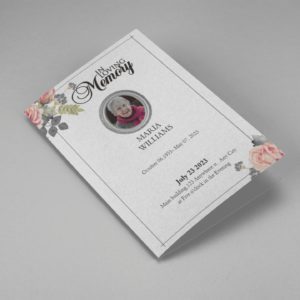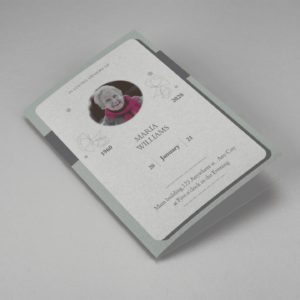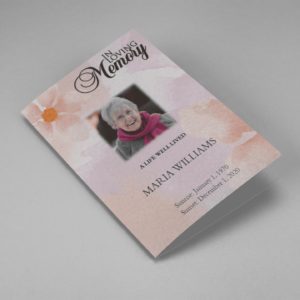Writing an obituary for a loved one can be an emotionally challenging task. It requires balancing the need to honor their memory while providing a concise, informative summary of their life. Whether you’re preparing for a funeral or creating a memorial keepsake, having access to well-crafted obituary samples can make the process easier. On this page, you’ll discover various Examples Of Obituary Samples For Loved Ones, learn about their benefits, explore different types, and find tips on how to choose and create the perfect obituary.
Benefits of Using Examples of Obituary Samples for Loved Ones
1. Provides Structure and Guidance
Creating an obituary from scratch can be daunting, especially during a time of grief. Examples of obituary samples offer a clear structure, helping you understand what information to include and how to format it. This guidance can make the writing process smoother and less stressful.
2. Ensures Important Details Are Included
Obituary samples typically cover all the essential details, such as the deceased’s full name, date of birth, date of death, family members, and key life events. Using a sample ensures that you don’t miss any crucial information, allowing you to create a complete and accurate tribute.
3. Saves Time and Effort
When you’re grieving, time and energy are often in short supply. Examples of obituary samples can save you valuable time by providing a ready-made template that you can customize. This allows you to focus on personalizing the obituary rather than starting from scratch.
4. Inspires Personalization
Obituary samples can serve as inspiration, helping you find the right words to express your thoughts and emotions. They can guide you in adding personal touches that make the obituary unique and reflective of your loved one’s life.
Types of Obituary Samples for Loved Ones
1. Traditional Obituary
A traditional obituary is the most common type, often found in newspapers. It includes basic details such as the deceased’s name, age, date of death, and information about the funeral service. It may also mention family members, career highlights, and community involvement.
Example: “John Michael Smith, 75, passed away peacefully on July 10, 2024. He is survived by his wife, Mary, and three children. John was a beloved teacher who dedicated 40 years to inspiring young minds at Springfield High School. A funeral service will be held on July 15, 2024, at St. Peter’s Church.”
2. Short Obituary
A short obituary is concise and to the point, usually limited to a few sentences or a paragraph. It covers only the most essential details, making it suitable for publications with space constraints or for those who prefer a simple announcement.
Example: “Jane Doe, 82, of New York City, passed away on August 5, 2024. She is survived by her daughter, Emily, and son, Robert. A private family service will be held.”
3. Full-Length Obituary
A full-length obituary offers a more detailed account of the deceased’s life. It may include anecdotes, hobbies, achievements, and more personal reflections. This type of obituary is ideal for those who wish to create a comprehensive tribute.
Example: “Margaret Ann Johnson, 89, passed away on June 20, 2024, surrounded by her family. Born in 1935 in Chicago, Margaret was a devoted wife, mother, and grandmother. She had a passion for gardening and was known for her beautiful roses. Margaret volunteered at the local food bank for over 30 years, touching countless lives. Her kindness and generosity will be deeply missed. A celebration of life will be held at her home on June 25, 2024.”
4. Biographical Obituary
A biographical obituary focuses on the deceased’s life story, providing a narrative that highlights key moments and achievements. It is often written in a more literary style and may be used for individuals with significant public or professional recognition.
Example: “Dr. William Harris, a pioneer in environmental science, passed away at 87. Born in 1937, William dedicated his life to studying the effects of climate change. He earned his Ph.D. from Stanford University and went on to publish numerous groundbreaking studies. His work was instrumental in shaping global environmental policies. William’s legacy will live on through his contributions to science and his tireless advocacy for the planet.”
5. Celebration of Life Obituary
A celebration of life obituary emphasizes the positive aspects of the deceased’s life, focusing on joyful memories and achievements. It often includes details about a memorial service that is designed to be a celebratory event rather than a somber occasion.
Example: “We celebrate the life of Robert Miller, 68, who passed away on September 12, 2024. Bob was known for his infectious laughter and love of music. He spent his weekends playing guitar at local venues, bringing joy to everyone who heard him. Join us for a celebration of Bob’s life on September 18, 2024, at the Bluebird Café. In lieu of flowers, please donate to the Music for All Foundation.”
How to Choose the Right Obituary Sample for Your Loved One
1. Consider the Deceased’s Personality and Legacy
Think about what type of obituary would best reflect your loved one’s personality, values, and achievements. A traditional obituary may be fitting for someone with a strong sense of tradition, while a celebration of life obituary might be more appropriate for someone known for their joyful spirit.
2. Determine the Length and Detail Required
Consider how much information you want to include. A short obituary may suffice for a simple announcement, but a full-length or biographical obituary may be needed if you want to share more detailed memories and stories.
3. Match the Style to the Intended Audience
Consider who will be reading the obituary. A more formal style may be appropriate for a wide audience, while a personal or informal tone may be suitable for a close-knit group of family and friends.
4. Use Multiple Examples for Inspiration
Don’t hesitate to review multiple examples before making your choice. Combining elements from different samples can help you create a unique obituary that truly honors your loved one.
5. Seek Input from Family and Friends
Involving other family members and close friends in the process can provide additional insights and help ensure that the obituary resonates with everyone who knew the deceased.
Tips for Creating or Using Obituary Samples
1. Personalize the Content
While samples provide a great starting point, personalizing the obituary with unique details and stories about your loved one will make it more meaningful.
2. Keep It Clear and Respectful
Ensure that the obituary is clear, concise, and respectful. Avoid overly complex language and focus on conveying the essential information and sentiments.
3. Proofread and Edit
Before finalizing the obituary, proofread it for any errors in spelling, grammar, or factual accuracy. Editing ensures that the obituary is polished and professional.
4. Include Photos If Possible
Adding a photo of your loved one can enhance the obituary, providing a visual tribute that complements the written content. Choose a photo that reflects their personality and life.
5. Consult with the Funeral Director
If you’re unsure about any aspect of the obituary, consult with the funeral director. They can provide guidance on what to include and how to format the obituary for publication.
6. Consider Cultural and Religious Sensitivities
Be mindful of cultural and religious traditions when writing the obituary. Including relevant customs can help honor the deceased’s heritage and beliefs.
Funeral Obituary Template
-
Searching for a Oak Leaf With Gold Oval Frame Half Page Funeral Program that is easy to print and amass and has a cutting-edge look? The Oak Leaf With Gold Oval Frame Half Page Funeral Program is the Perfect decision because it measures 8.5”x 5.5”.
- No Limitation on Content, Edit anything
- Edit anytime – unlimited revisions even after purchased
- Get a printable PDF downloaded to get it printed on your own.
-
Searching for a Brown and White Classic Funeral Program Half Page Program that is easy to print and amass and has a cutting-edge look? The Brown and White Classic Funeral Program Half Page Program is the Perfect decision because it measures 8.5”x 5.5”.
- No Limitation on Content, Edit anything
- Edit anytime – unlimited revisions even after purchased
- Get a printable PDF downloaded to get it printed on your own.
-
Searching for a Purple Elegant Watercolor Half Page Funeral Program Template that is easy to print and amass and has a cutting-edge look? The Purple Elegant Watercolor Half Page Funeral Program Template is the Perfect decision because it measures 8.5”x 5.5”.
- No Limitation on Content, Edit anything
- Edit anytime – unlimited revisions even after purchased
- Get a printable PDF downloaded to get it printed on your own.
-
Searching for a Cream and Green Photo Obituary Half Page Program that is easy to print and amass and has a cutting-edge look? The Cream and Green Photo Obituary Half Page Program is the Perfect decision because it measures 8.5”x 5.5”.
- No Limitation on Content, Edit anything
- Edit anytime – unlimited revisions even after purchased
- Get a printable PDF downloaded to get it printed on your own.
-
Searching for a Cream Simple Elegant Photo Church Half Page Program that is easy to print and amass and has a cutting-edge look? The Cream Simple Elegant Photo Church Half Page Program is the Perfect decision because it measures 8.5”x 5.5”.
- No Limitation on Content, Edit anything
- Edit anytime – unlimited revisions even after purchased
- Get a printable PDF downloaded to get it printed on your own.
-
Searching for a Samovar Silver Half Page Funeral Program Template that is easy to print and amass and has a cutting-edge look? The Samovar Silver Half Page Funeral Program Template is the Perfect decision because it measures 8.5”x 5.5”.
- No Limitation on Content, Edit anything
- Edit anytime – unlimited revisions even after purchased
- Get a printable PDF downloaded to get it printed on your own.
-
Searching for an Elegant Beige Half Page Funeral Program Template that is easy to print and amass and has a cutting-edge look? The Elegant Beige Half-Page Funeral Program Template is the Perfect decision because it measures 8.5”x 5.5”.
- No Limitation on Content, Edit anything
- Edit anytime – unlimited revisions even after purchased
- Get a printable PDF downloaded to get it printed on your own.
-
Searching for a White Floral Pro Half Page Funeral Program Template that is easy to print and amass and has a cutting-edge look? White Floral Pro Half Page Funeral Program Template is the Perfect decision because it measures 8.5”x 5.5”.
- No Limitation on Content, Edit anything
- Edit anytime – unlimited revisions even after purchased
- Get a printable PDF downloaded to get it printed on your own.
-
Searching for a Grey and Burgundy Elegant Half Page Funeral Program Template that is easy to print and amass and has a cutting-edge look? Grey and Burgundy Elegant Half Page Funeral Program Template is the Perfect decision because it measures 8.5”x 5.5”.
- No Limitation on Content, Edit anything
- Edit anytime – unlimited revisions even after purchased
- Get a printable PDF downloaded to get it printed on your own.
-
Searching for a Soft Green and Grey Minimalist Floral Half Page Funeral Program Template that is easy to print and amass and has a cutting-edge look? Soft Green and Grey Minimalist Floral Half Page Funeral Program Template is the Perfect decision because it measures 8.5”x 5.5”.
- No Limitation on Content, Edit anything
- Edit anytime – unlimited revisions even after purchased
- Get a printable PDF downloaded to get it printed on your own.
-
Searching for a Gray Elegant Oval Frame Half Page Funeral Program Template that is easy to print and amass and has a cutting-edge look? Gray Elegant Oval Frame Half Page Funeral Program Template is the Perfect decision because it measures 8.5”x 5.5”.
- No Limitation on Content, Edit anything
- Edit anytime – unlimited revisions even after purchased
- Get a printable PDF downloaded to get it printed on your own.
-
Searching for a Blue Organic Minimal Half Page Funeral Program Template that is easy to print and amass and has a cutting-edge look? Blue Organic Minimal Half Page Funeral Program Template is the Perfect decision because it measures 8.5”x 5.5”.
- No Limitation on Content, Edit anything
- Edit anytime – unlimited revisions even after purchased
- Get a printable PDF downloaded to get it printed on your own.
-
Searching for a Pink and Orange Watercolour Half Page Funeral Program Template that is easy to print and amass and has a cutting-edge look? Pink and Orange Watercolour Half Page Funeral Program Template is the Perfect decision because it measures 8.5”x 5.5”.
- No Limitation on Content, Edit anything
- Edit anytime – unlimited revisions even after purchased
- Get a printable PDF downloaded to get it printed on your own.
-
Searching for a Pink Floral Paper Half Page Funeral Program Template that is easy to print and amass and has a cutting-edge look? Pink Floral Paper Half Page Funeral Program Template is the Perfect decision because it measures 8.5”x 5.5”.
- No Limitation on Content, Edit anything
- Edit anytime – unlimited revisions even after purchased
- Get a printable PDF downloaded to get it printed on your own.
Funeral Programs : Helping Videos
Frequently Asked Question On Examples Of Obituary Samples For Loved Ones
What is an obituary?
An obituary is a written notice of a person’s death, typically published in a newspaper or online. It provides a summary of the deceased’s life, including key details such as their name, age, date of death, and information about the funeral service.
How can I customize an obituary sample?
You can customize an obituary sample by adding personal details about the deceased, such as their hobbies, achievements, and special memories. You can also adjust the tone and style to match their personality.
How do I format an obituary for a newspaper?
When formatting an obituary for a newspaper, keep it concise and follow the publication’s guidelines for length and style. Include all essential details, and consider using a photo if the newspaper allows it.
Can I include multiple obituaries in one announcement?
Yes, if multiple family members have passed away, you can include their obituaries in one announcement. Be sure to clearly separate each individual’s obituary and provide the relevant details for each person.






